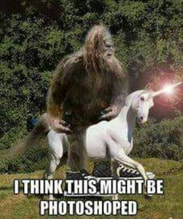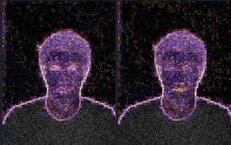|
Context:
In what context is the picture presented? Image manipulation is the norm in some contexts, like product and fashion photography, and some kinds of artistic photo. News agencies and nature photographers on the other hand have strict ethical rules against manipulation. First think about if manipulation is to be expected and if it should be accepted. |
|
Lighting:
Are light and shadows similar between objects in the picture? Pay attention to which side is lighter, how hard the light seem to be and how the objects cast shadows. Needless to say, objects close to each other get the same light in real life. If they are illuminated differently, they may originate from different photos. Also pay attention to the environment. From what direction is the light supposed to come? |
|
Cloning:
Image manipulation often requires filling areas to replace removed objects. Patterns that repeat in an unnatural way is a sure sign of sloppy cloning. Cloning can also be used to multiply an object, but several identical object do rarely look exactly identical in a real photo due to differences in perspective and lighting. It’s fishy if they look identical in a picture. |
|
Noise and grain:
All digital capture devices leave some kind of structure in the picture. Most notable is the noise produced by digital cameras. You can check that this structure is constant over the whole picture if you have access to a fairly hi-resolution image. It’s futile to try this on small images from on-line news sites. |
|
EXIF / Metadata
Metadata is data hidden inside the image files. One important piece of data is the software used to save the file. A camera model name would indicate no manipulation at all. Workflow programs like Adobe Lightroom and Apple Aperture are typically used to do moderate adjustments of images, but no real manipulation. |
Free Online Image Analysis Tools
|
With all of the above being said, we have gathered together several useful photo analysis tools that you can use right now to help you determine whether or not a paranormal photo is real. You do not need to be a professional image analyst to use these tools. However you will need a little bit of technical aptitude and of course an attention to detail. Feel free to scan your photographs using these tools, but always keep your good ol'fashioned instincts in tune because there is ultimately no substitute for a keen eye and a sharp, discerning mind.
|
|
FotoForensics is an excellent Error Level Analysis tool that you can run on any photo you wish right inside your browser window. Click on the FotoForensics logo to access the application.
|
|
Image error level analysis (E.L.A.) is a technique that can help to identify manipulations to compressed (JPEG) images by detecting the distribution of error introduced after resaving the image at a specific compression rate.
Here is an HTML5-based E.L.A. analyzer where you can simply drag your image directly onto your browser window to begin a detailed side-by-side E.L.A. scan. (Click Image at left) |

















